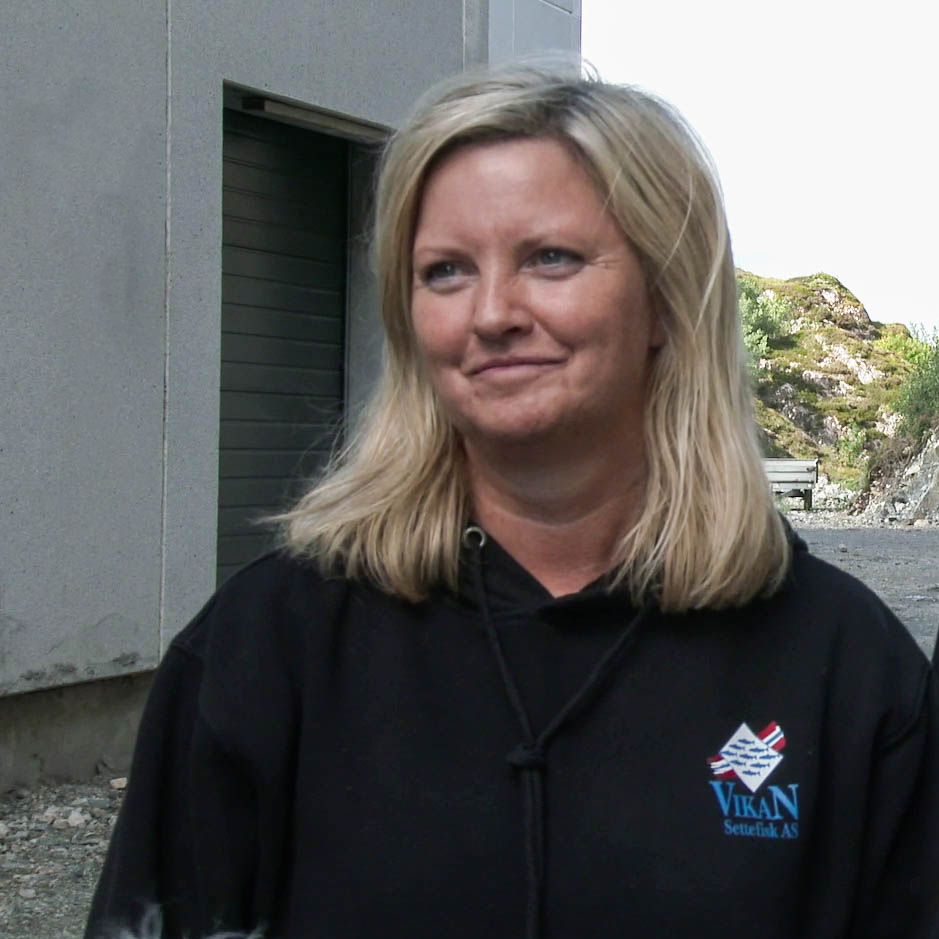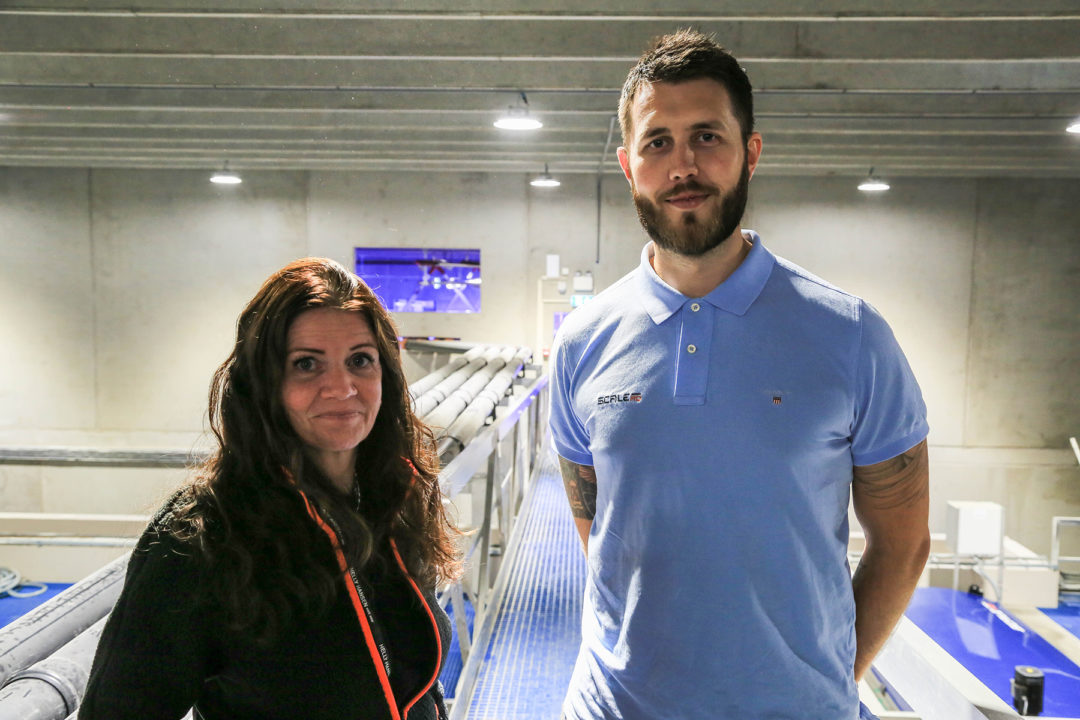Friday marked the delivery of the first generation of salmon to be reared at the Tverrvågan RAS facility on the island of Frøya. The wellboat anchored 450 meters from the facility before pumping the fish aboard. Vikan inserted the first roe into the facility at the beginning of November 2019 and the fish have grown to a size of 140 grams since then. The fish were delivered to Erviks Laks og Ørret.
Strong fish
“We are really happy to be in the position to deliver the first generation of fish from our brand new RAS facility,” said Britt Åse Skarsvåg, CEO of Vikan Settefisk AS. “The fish have grown well and appear to be strong and well-equipped for their period at sea. We are very pleased with our partnership together with ScaleAQ, and we really appreciate the way in which they have been a presence while helping to ensure that the facility was ready on time.”
Advanced facilities
Dr Astrid Buran Holan heads up ScaleAQ’s landbased innovation team and is a part-time associate professor in the Department of Marine Technology at the NTNU Norwegian University of Science and Technology. She highlighted several key factors at the facility that ensure the fish have the best possible conditions for growth while onshore. “Firstly, the water inflow has to be pathogen-free, regardless of whether fresh water or seawater is in use. This means it is both filtered and subjected to UV treatment. Furthermore, our RAS systems are based on several stages of water treatment. In order to achieve good fish health and growth, it is essential that we have the right water quality over the long-term. It is important that we maintain control of water quality and that we have an overview of a range of parameters. Another vital factor is ensuring high level, appropriate expertise in relation to aquaculture and operations is in place.”
Particle removal
“The removal of particles is important in order to achieve good quality water that remains stable. Our tanks are designed to ensure the optimum removal of sedimentable particles. Feed residues and feces are removed from the fish tank through the use of a double outlet (particle trap) before being led to a sludge collector on the tank wall. Furthermore, we remove finer particles and loose organic matter through the use of protein skimming and ozone treatment. This takes place in a side stream alongside the bioreactor. You might say the water has been fine polished! Ensuring there is good control over waste matter is essential since their presence may otherwise lead to a poor environment for aquaculture purposes. Bacterial growth is another factor that is affected by particles in the water. The goal is to ensure the water is mature and microbially stable, and that is has the right balance. Fluctuations in particle levels can lead to adverse conditions. This means it is important for the removal of particles to occur as early as possible before they have time to dissolve, and this process must be one that is both stable and continuous.”
“Fish are like people - they benefit from movement and exercise.”
Hydrodynamics
“The hydrodynamics – essentially how the water moves in every part of the facility – is also crucial. When the facility was designed, we had to avoid death zones that might lead to accumulations of sludge and sediment. The risk that toxic hydrogen sulfide is produced in such locations is especially high in seawater. It is not always possible to design away all such death zones as it is necessary to add flushing systems to ensure good circulation is in place. Additionally, the right hydrodynamics in the tank ensure good O2 conditions and good fish welfare. Fish are like people – they benefit from movement and exercise.”
Presence
In addition to hydrodynamics and particle removal, there are also many other factors that affect the first and next generations of a facility. “We are focused on being both present and carrying out follow-up work,” says Dr Holan. This is particularly pertinent during start-up and commissioning, but it may frequently continue for longer depending on the customer’s wishes. We love to see the fish developing, and we feel in many ways as if a small part of each fish in facilities we have delivered belongs to us – it is always gratifying to pay a visit to the facilities.”

